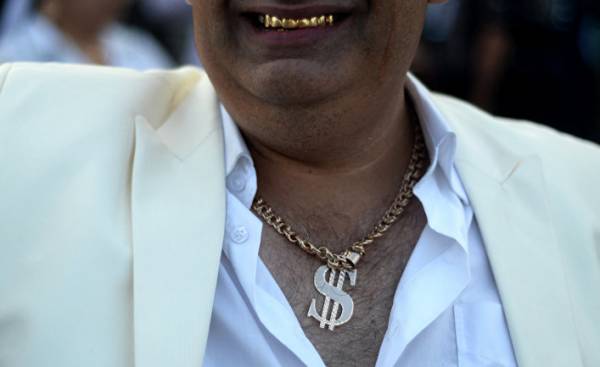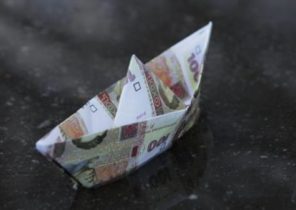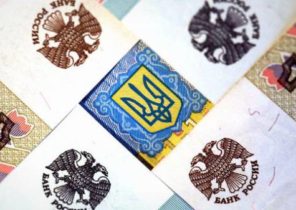
When in July last year, died the author of the novel “Sandro from Chegem”, condolences on his death expressed himself master of the Kremlin Vladimir Putin. Phazil Iskander, who was a native of the Caucasian black sea region of Abkhazia, was 87 years old. He was the authority, including, and because of his statements against the separatist wars, repressions and deportations.
However, the memories will remain, first and foremost, his books, especially his novel about an elderly uncle Sandro from the small Abkhazian mountain village of Chegem. The novel came out in 1973. Soviet censorship it has been reduced by two-thirds, has not yet been published in the West.
Iskander wrote about the history and life of his people on the Eastern end of the Black sea. In the book, among other things, there is a scene in which Sandro’s wife needed to get new teeth.
At first the doctor refuses, because he supposedly has no gold which he could use. Only when a friend of Sandro threatened the dentist with a gun, saying that he will visit the tax office to find out how and what he spent in the state — gold, the doctor immediately changed position.
He immediately put the woman gold teeth. In the book it says she smiled and shone two rows of this splendor. In the USSR, in the Caucasus and Central Asian republics did indeed many. And even in the first post-Communist decade, the gold in your mouth is still highly valued.
And after the fall of the iron curtain the bet also made of gold.
This was caused by practical reasons, which was due to the Soviet planned economy and its consequences. In the end, behind the iron curtain was not metal, not to mention ceramics for manufacture of crowns or bridges.
And even after the fall of the iron curtain, when located to the West of the centers, such as Moscow and St. Petersburg, introduced new standards in the South-East and in the poorer former Soviet republics continued to insert gold teeth.
“We were told that gold even cleanses the body and lasts longer than titanium,” says Zarifa Hasanova. “On Titan said that he eventually acquires the smell and taste. Those who could afford, used the gold.”
42-year-old woman works in Moscow Deputy head of the cleaning company with a staff of about 150 employees. She hails from a small village Masses in the East of Kyrgyzstan is ethnically volatile region on the border with Uzbekistan.
In 2004 at the age of 30 she decided to cure his teeth. “Everything was, like many women. After the birth of her third child began calcium deficiency. The teeth are bad.” In the end, Zarif put 13 gold crowns, paying 1000 Kyrgyz som, which at the time equaled one-third the salary of a civil servant, it was about 15 euros.
In the case of Zarifa gold in his mouth had a medical justification, but in many others it was not. The fact that Golden bite was more prestigious Titan, was decisive for decades. The distribution of gold crowns and bridges have become a symbol of the region, stretching from the Chinese border to the Black sea.
Just put the teeth of the deceased grandfather
Gold teeth says a lot about the well-being of a man, was and aesthetic moment. And so it turned out that some were replaced by healthy teeth on gold or put gold lining. “Among my relatives and friends had a few of those,” says Fatima kazakbaeva. “It was really fashionable. Some put a whole row of gold teeth, and sometimes two rows. And I was thinking to do”.
In the end, the 35-year-old Kyrgyz woman from the Jalal-Abad 18 years ago has set itself three gold crowns. In the case of Fatima this was accompanied by another circumstance — when her grandfather died, she inherited his crown. So, gold has become a family value.
The dentist had to tweak the crown to fit the front teeth of Fatima. “Gold teeth were attractive,” says Fatima, who now lives in Moscow with her husband and two children. “And, as among women and among men.” She recognizes that the story of grandpa’s teeth today seems a bit strange.
The fact that this fashion has already passed, and “Golden smile” in Central Asia and the Caucasus are found mainly in the elderly, due to the massive spread of Western standards. “Ceramics is gold” — this is today’s trend, which is followed by Fatima zarifou.
Replacement 13 gold crowns on ceramic cost Zarifa in 2010 to 26 thousand soms. But as the gold crowns she left the doctor, it saved 6,000 soms. “Take some gold home — as a value,” says Zarifa.
Turkmenbashi Saparmurat Niyazov dissuaded from gold teeth
In Turkmenistan, a country with an absurd and ruthless dictatorship, from a Western point of view, this understanding came quickly. Not because the country that has the fourth-largest gas reserves, and could independently provide them with Germany for 200 years, was more exposed to Western influence and because it wanted to died in 2006, the head of state Saparmurat Niyazov.
Niyazov, who called himself Turkmenbashi himself immortalized, low tide Golden statue, in 2004, during the meeting with the students told the young girl with gold teeth: “No offense, your gold teeth are very beautiful, but with white you’re gonna look even better.”
The next day, according to government decree, began a large-scale replacement of teeth in the country. Not with a gun and a temple, as in the case of the dentist wife of Sandro in Abkhazia, and with the help of “soft power.”
The fact that Niyazov’s gold teeth were a symbol of a time when the country lived in poverty. And so he advised the student to consult with those present at the meeting, the then Minister of health Gurbanguly Berdimuhamedov, which will help her to insert white teeth instead of gold.
Berdymukhamedov actually a dentist by training — so he was the personal doctor of the Turkmenbashi, although the latter, in his own words, addressed to the German dentist. After his death his personal physician, became President of the country and is still.







